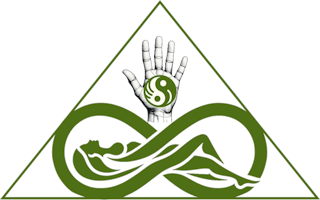Symptoms Associated with Femoral Nerve Conditions
Symptoms Associated with Femoral Nerve Conditions Conditions affecting the femoral nerve—whether due to inflammation, entrapment, or overuse—can produce a variety of symptoms. These typically may include some of the following: Pain: Often localised in the anterior thigh and groin. May radiate along the nerve’s pathway, sometimes extending to the medial aspect of the leg (especially if the saphenous nerve is involved). Sensory Changes: Numbness, tingling, or a burning sensation in the anterior thigh. Altered sensation along the medial leg and possibly the knee. Muscle Weakness: Reduced strength in the quadriceps muscles, which can lead to difficulties with knee extension. Challenges Read More
Femoral Nerve Pathway
Femoral Nerve Pathway Femoral Nerve Pathway The femoral nerve originates from the lumbar plexus and is the largest branch of this plexus. Below is its detailed pathway from origin to termination: Origin: Lumbar Plexus L2-L4 Formed by contributions from the ventral rami of L2, L3, and L4. Emerges from the lateral border of the psoas major muscle. Course in the Abdomen Travels inferiorly and laterally between the psoas major and iliacus muscles. Remains posterior to the iliac fascia. Passage Under the Inguinal Ligament Passes deep to the inguinal ligament in the iliac fossa. Enters the femoral triangle lateral to the Read More
Path of the Sciatic Nerve
Path of the Sciatic Nerve The sciatic nerve is the largest nerve in the human body, originating from the lumbosacral plexus and extending down the posterior aspect of the lower limb before dividing into its terminal branches. Here’s a detailed description of its path: 1. Origin The sciatic nerve arises from the lumbosacral plexus, specifically from the ventral rami of L4, L5, S1, S2, and S3. These nerve roots contribute to two major divisions: Tibial division (L4-S3) Common fibular (peroneal) division (L4-S2) 2. Pelvic Course The nerve exits the pelvis through the greater sciatic foramen, passing inferior to the piriformis Read More
Pathway of the Human Vagus Nerve
1. Origin in the Brainstem Nuclei: The vagus nerve fibers arise primarily from two major nuclei in the medulla oblongata: Dorsal motor nucleus of the vagus (parasympathetic component) Nucleus ambiguus (motor fibers to certain skeletal muscles, e.g., pharynx and larynx) Sensory information projects into the solitary nucleus (especially visceral and taste sensation). Emergence from the Medulla: The vagus nerve exits the medulla on its lateral aspect, in the region between the olive and the inferior cerebellar peduncle. It exits the skull via the jugular foramen alongside the glossopharyngeal nerve (CN IX) and the accessory nerve (CN XI). 2. Ganglia Near Read More
Range of Motion
Range of Motion: Anatomical vs Physiological Anatomical Range of Motion (AROM) Anatomical Range of Motion refers to the maximum possible movement around a joint, as determined by the physical limitations of the anatomy. This includes the physical limitations imposed by the shapes and lengths of the bones, the constraints imposed by ligaments and tendons, and the arrangement of the surrounding muscles and tissues. This is typically the measure you’d see in an anatomy textbook and represents the theoretical maximum that a joint could move under ideal circumstances. Physiological Range of Motion (PROM) Physiological Range of Motion refers to the range Read More
Acromioclavicular Joint Injuries
Grades of Injury to the Acromioclavicular Joint The acromioclavicular (AC) joint is a small joint located at the top of the shoulder where the clavicle (collarbone) meets the acromion process of the scapula (shoulder blade). Injuries to this joint are common, particularly in contact sports or after falling on an outstretched arm. AC joint injuries are classified into six grades, based on the severity of the injury and the extent of damage to the joint and surrounding structures. Grade 1: Sprain of the AC jointIn a Grade 1 injury, the AC joint ligaments are stretched or partially torn, but the Read More
Dry Needling and Acupuncture
Comparison: Dry Needling and Acupuncture Dry Needling vs. Acupuncture Dry needling and acupuncture are both therapeutic modalities that involve the insertion of thin needles into specific points on the body to alleviate pain, promote healing, and improve overall well-being. While there are similarities between the two practices, they differ in terms of their underlying theories, philosophies, and applications. Dry Needling Theoretical basis: Dry needling is primarily based on Western medical principles, particularly the understanding of the neuromuscular system and trigger points. It focuses on the treatment of musculoskeletal pain and dysfunction. Trigger points: Dry needling targets myofascial trigger points, which Read More
The Spinal Engine
Serge Gracovetsky’s Spinal Engine Principles Serge Gracovetsky’s Spinal Engine Principles Serge Gracovetsky is a researcher who developed the concept of “The Spinal Engine” in the late 20th century. His work primarily focuses on understanding the role of the spine and its biomechanics in human locomotion. Gracovetsky’s “Spinal Engine” concept suggests that the spine is a critical element in human movement, not just a passive structure for support and protection of the spinal cord. Main Principles of “The Spinal Engine” Coupling between spinal movement and extremities: Gracovetsky proposed that the spine plays a crucial role in coordinating and transferring forces between Read More
Hip Labral Tears
Hip Labral Tear Conservative Treatment Exercises Conservative Treatment for Hip Labral Tears Conservative treatment for a hip labral tear typically focuses on reducing pain, improving hip function, and preventing further injury. It’s important to consult with a healthcare professional or physical therapist for a personalized treatment plan, as individual cases may vary. However, some common exercises and techniques used in conservative treatment for hip labral tears include: Range of motion exercises: Gentle stretching and mobility exercises can help improve flexibility and reduce pain in the hip joint. Examples include hip circles, ankle pumps, and knee-to-chest stretches. Strengthening exercises: Strengthening the Read More
